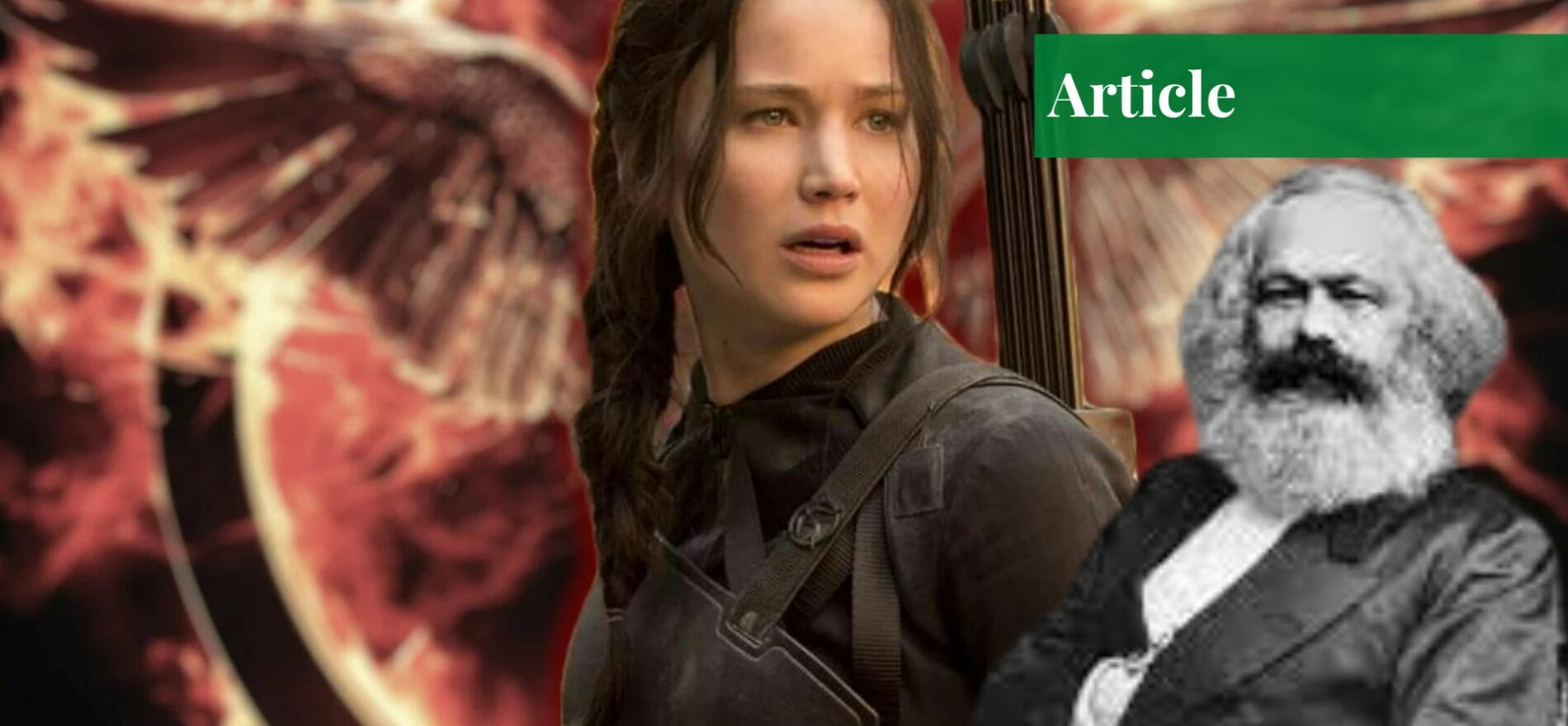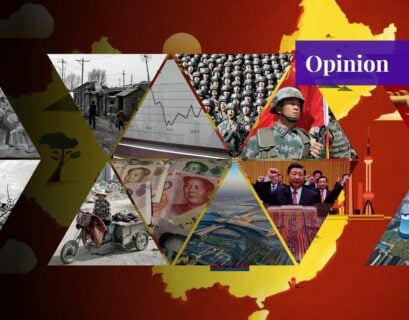She is an enthusiastic graduate with a Bachelor's in English Language and Literature. She enjoys adding fresh perspectives to global happenings, intertwining them with the realms of literature.
A context-oriented text analysis focuses on understanding a certain text’s political, ideological, historical, and economic factors. Many theories and lenses such as Marxist and Feminist perspectives are context-related as they are taken into account to analyze and answer any questions that are raised or images that are described in the text. Here, I will consider Louis Althusser’s “interpellation theory” about the film adaptation of The Hunger Games, directed by Gary Ross in 2012.
Theory of Marxism
Before embarking upon the analysis of the text itself, it would be instructive to know what Marxism is. It was introduced by a German philosopher, economist, and historian named Karl Marx. He did not introduce the term “Marxism,” a title that represents the followers of his ideas. He, along with his co-author, Friedrich Engels, another German critic of the political economy, wrote the “Communist Manifesto.” It is the primary text for Marxism and mentions the theory of materialism and the overthrow of the capitalist society by the proletariat.
Marxist theory caters to the modes of production and the relationships of exchange that form the base of society and the superstructure. It presents a socioeconomic or materialist interpretation of class relations and social conflicts. It opposes the economic system based on inequality, alienation, and exploitation of the majority. Marx believed that society as a whole is split up into great hostile camps or two great classes facing each other, called the “Bourgeoisie” and “Proletariat.”
“Political power, properly so called, is merely the organized power of one class for oppressing another.” Karl Marx, The Communist Manifesto
This fact is made evident throughout the film.
Theory of Interpellation
Althusser’s theory is based on the works of Antonio Gramsci (who gave the concept of cultural hegemony), Sigmund Freud, and Jacques Lacan. In his book of essays, “Lenin and Philosophy and Other Essays,” there is an essay titled “Ideology and Ideological State Apparatuses” originally published in 1970. In it, Althusser introduces the concept of “interpellation” or “hailing” of the subject. He writes that the ideology functions to recruit individuals as “subjects” or “subjects amongst individuals” which he explains through a theoretical scene.
If someone shouts “Hey!” while you are walking, you will suddenly stop and look around. According to Althusser, in this scenario, you are subject to these words, as you consider that the hail was addressed to you. Ideology hails individuals as subjects. He also introduces the terms ISA (ideological state apparatuses) and RSA (repressive state apparatuses). ISA functions as a unified entity or institution, unlike RSA, which is diverse and focuses on ideology.
Althusser further states that the dominant class exerts its power on the oppressed, but it is not always through oppressive means. Individuals are interpellated or hailed from the day they are born. They are subjects, and their existence has no inherent meaning; rather, it only comes into being when they are recognized in a specific way by having society as the referent. The hailing of subjects is thus termed as ISA.
RSA includes the military, police, or government, which functions predominantly by repression. ISAs are commonly accepted ideologies assimilated through churches, educational institutions, and other entities in private domains. The dominant ideology is commonly accepted, whereas RSAs are rarely shown.
Analysis of The Hunger Games
Written by Suzanne Collins, the trilogy is about the Government of Panem and its Capitol, the main controller of state affairs, controlling all twelve districts. Each district has certain duties to fulfill and provides the rest with resources distinct to it. The people in the districts have little to no freedom in choosing their careers, other than what is designated for that particular district.
Due to the oppressive rule of the Capitol, there was an uprising and an outbreak of “The First Rebellion,” resulting in the rising of the districts. The screen hints that on the reaping day, the rebellion was instigated by District 13, due to which it was destroyed afterward. The rest of the districts were made to sign a pact. Yearly, hunger games would be held, and each district must provide a boy and a girl on the reaping day, as two tributes, to participate in a fight to the death till only one of the 24 players remained. These games were to be a constant reminder that the Capitol was the one in power, and the rest were its subjects.
The dystopian novel revolves around two main characters named Katniss Everdeen and Peeta Mellark, and how they survive the game. Their rebellious nature is evident throughout the film. One key moment is when the rules change between the games to present a spectacle for the Capitol residents. For them, the hunger games are an annual leisure activity for which they eagerly await the entire year.
The Capitol chose to allow two players from one district to win the hunger games, but in the end, when two remained, Katniss and Peeta, they again changed the rules. Both attempt to commit suicide by eating some deadly berries to make sure that the game makers do not have a victor at all. They acted as if they swallowed the berries when in reality they didn’t. This felt like a slap to the face of the game makers who initially placed the berries in the arena. At the end of the film, Katniss and Peeta win the game and return to their district.
Taking into account Althusser’s theory, interpellation is how individuals are taught societal norms, and how those in power control their subjects. State control functions through ISA and RSA. The film “The Hunger Games” shows a delineated discourse depicted through various ISAs and RSAs. The film starts with text on the screen which, in summary, states that in return for the rebellion instigated by the 13 districts, they will have to participate in the bloody hunger games through a public reaping.
Althusser describes how ISAs can play a powerful role in disseminating an ideology. An example of this is the legitimization of the hunger games. As the film begins, the communication apparatus is crammed with notions of nationalism, liberalism, and morality.
We hear Caesar Flickerman and Seneca Crane conducting an interview that foreshadows the 74th hunger games. Seneca mentions “something that knits us together,” as if he considers people living in the Capitol, the audience and ruling class, and the residents of the districts, fighters who must provide for their children, to be on the same level. While describing the meaning of the games, we witness the transformative power of ideological memory (the rebellion), which converts a punishment into a tradition, and later on, it transforms into a healing process that apparently knits them all together.
The Government of the Capitol put the districts under its control through “peacemakers.” However, an ideology is also built which states that the districts have to provide for their children and gather for the reaping day as a ritual and wait for the lottery. The games are televised across all districts to internalize them as a tradition and not a threat. The Nation of Panem and its governing body is thus RSA, along with the peacemakers and military.
The ideology of the games has already been established and sets the concept of an alternate hegemony along these lines. Katniss Everdeen is seen as a rebellious character, always viewing everything with suspicion and not wanting to give in to the rules of the Capitol. Towards the end of the game, when the rules are changed to only allow victory to a single player instead of two (the rules were initially changed for the two star-crossed lovers, Katniss and Peeta, to go home together), Katniss and Peeta pretend to commit suicide as a symbolic gesture. Knowing how Peeta and Gale (a side character from District 12) find the government unjust, Katniss takes revenge against the Capitol in her own way.
Another rebellious/existing out-of-the-subject ideological act is when Katniss shoots her bow, aiming for an apple that was fitted in a roasted pig’s mouth to get attention from the spectators, which was otherwise not being given. Examples of RSA are how Katniss and Gale talk about “cutting out their tongues” and how “they would never have kids,” showing that they are subjects of the government and are not free.
Even free speech is not allowed to the citizens of Panem. Katniss’ anger is shown through her seething demeanor, knowing that the games are unjust. It is also a reawakening of the subject, which might foreshadow a rebellion yet again. ISAs are shown when the forced festivities are not celebrated by the people after Katniss volunteers, essentially sacrificing herself, in place of her sister. This shows that the ideologies that had been built for so long had shattered.
In a nutshell, Althusser’s concept of interpellation describes ideology through ISA and RSA, which are the apparatuses that show who the subjects are and how they came to be so. In “The Hunger Games” series, ISAs, and RSAs are seen frequently. The districts are subjected to RSA physically, but Panem controls their ideology through ISA. The hunger games trilogy stands out as a perfect example of Marxist analysis, taking into account Althusser’s concept of ideology and ideology apparatuses.
If you want to submit your articles, research papers, and book reviews, please check the Submissions page. The views and opinions expressed in this article/paper are the author’s own and do not necessarily reflect the editorial position of Paradigm Shift


















